#Gale Gordon
Text

Lucille Ball; Desi Arnaz, Jr., Lucie Arnaz, and Gale Gordon for “Here’s Lucy” (1968-1974)
41 notes
·
View notes
Photo

“Lorrrr-eeeee!” - Gale Gordon
52 notes
·
View notes
Text
Also, shout out to Darla the Dog, who played the creepy poodle in Batman Returns.

She managed to be in a heck load of famous movies in the eighties and nineties, including…

Precious in The Silence of the Lambs…

Queenie in The ‘Burbs…
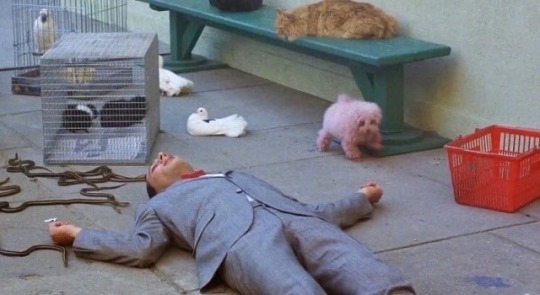
And a pink poodle in Pee Wee’s Big Adventure.
(I know what you’re thinking—these can’t all be the same dog. Indeed, Darla was the Robert De Niro of dogs.)
And apparently she lived to be the ripe old age of 17! So good for her!
#Batman Returns#Darla#Darla the Dog#The ‘Burbs#Gale Gordon#Pee Wee’s Big Adventure#Pee Wee Herman#Paul Reubens
38 notes
·
View notes
Text



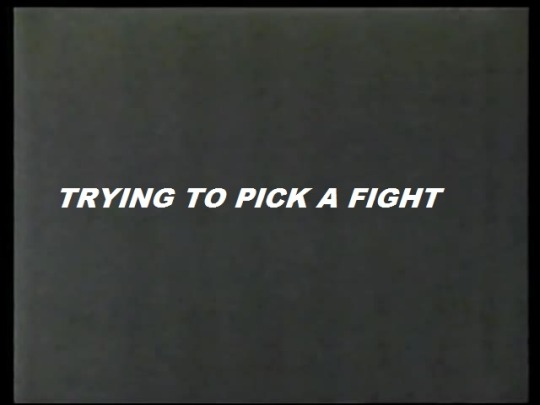

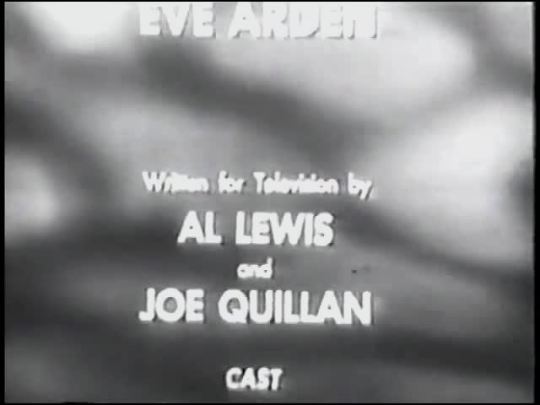
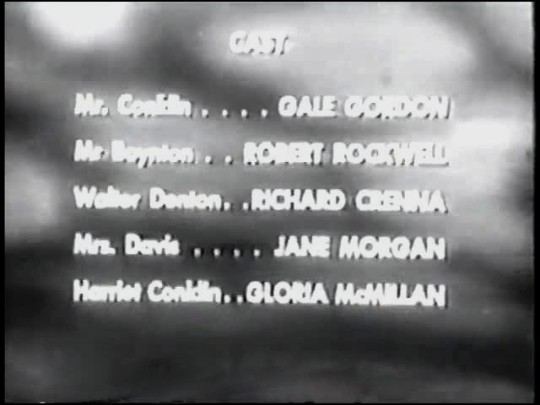






From the Golden Age of Television
Series Premiere
Our Miss Brooks - Trying to Pick a Fight - CBS - October 3, 1952
Sitcom
Running Time: 30 minutes
Directed by Al Lewis
Stars:
Eve Arden as Connie Brooks
Richard Crenna as Walter Denton
Gale Gordon as Osgood Conklin
Robert Rockwell as Philip Boynton
Jane Morgan as Mrs. Margaret Davis
Gloria McMillan as Harriet Conklin
Paula Winslowe as Martha Conklin (uncredited)
#Our Miss Brooks#TV#Premiere Episode#1952#CBS#Trying to Pick a Fight#Sitcom#Eve Arden#Richard Crenna#Gale Gordon#Robert Rockwell#Jane Moran#Gloria McMillan
2 notes
·
View notes
Text
LINE!!!
Lucille Ball: Scripts, Cue Cards, and Teleprompters

As a film star, Lucille Ball only had to memorize dialogue in short, bite-sized chunks. On radio, Lucille and her cast-mates read from scripts. But on television, in a realistic situation comedy, Ball needed to memorize a full thirty minute script a week!
CUE CARDS & PROMPTERS & SCRIPT SLIPS!
Credit for developing the cue card (sometimes derisively called ‘idiot cards’) is genereally given to John Barrymore, who had them tucked in out-of-the-way places during his stage performances in the 1930s.

Ed Wynn placed cue cards in the orchestra pit when he worked in vaudeville, then brought the practice to television with “The Ed Wynn Show” (1949-50), on which Lucille Ball got her first taste of the new medium, and was introduced to the concept of cue cards.

Wynn’s cards were prepared by Barney McNulty (1923-2000), known as the ‘King of Cue Cards’. He went on to form a company named Ad-Libs, a cue card company whose clients included many early TV stars, including Lucille Ball. McNulty later praised Ball for her cue card savvy:
“Hardly anyone realizes that the madcap redhead has cue cards on the set!”
McNulty claimed to have flipped cards for the “I Love Lucy” pilot episode. But “I Love Lucy” was quite different from shows starring Milton Berle, Ed Wynn, and Bob Hope, who did not use the convention of the fourth wall. Ball and her cast were performing a realistic teleplay that required them to make eye contact with their fellow actors, not look to cue cards. For this reason, cue cards were virtually unknown during “I Love Lucy.” Of course, there were exceptions...
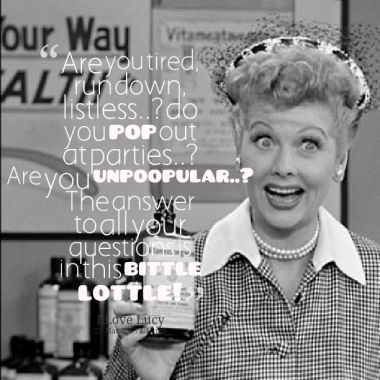
For her Vitameatavegamin spiel in “Lucy Does A TV Commercial” (1952) every slurred word and syllable was written in the script. To be letter perfect, and just to be on the safe side, Ball had cue cards set up in case she forgot her lines. Performing physical comedy in front of a live audience gets less laughs after the first take. Plus, re-takes were time consuming and expensive. It was hardly necessary. Lucy didn’t miss a beat and nailed it in one take.

On December 14, 1953, Lucille Ball and Desi Arnaz were the first to use a new teleprompting system developed by their producer, Jess Oppenheimer, although it was not the first in-camera system. Fred Barton had developed one as early as early as 1948. A forerunner to the modern video teleprompter, Oppenheimer’s “through the roll system” was later granted a US patent.

Lucy and Desi did not use it for the main show, which that night was “Lucy Has Her Eyes Examined”. Oppenheimer did not like that it obstructed the view of the live audience, but it was used for the Philip Morris commercials, which were filmed without an audience. The sponsors wanted their message clearly communicated, so it was important that the script be delivered verbatim. With the memorization of a weekly script, Lucy and Desi did not need the burdon of also memorizing commercial copy.
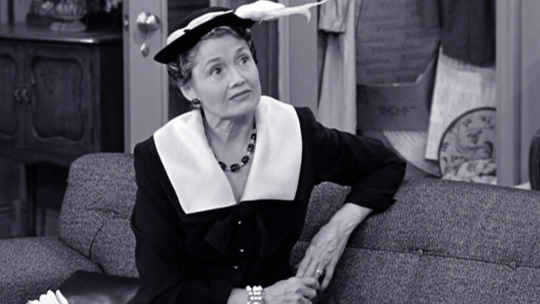
In “Lucy’s Mother-in-Law” (1954) the Ricardo closet door is wide open and it looks like there is a cardboard box of used cue cards stored in there! Even if they weren’t used on “I Love Lucy,” they might have been scared up from the Desilu prop room to “dress” the closet.

Bob Hope was notorious for his regular use of cue cards. When he guest-starred as himself on “I Love Lucy” in 1956, he read his lines from cue cards. It was prop man Jerry Miggins who was in charge of holding them for Hope.
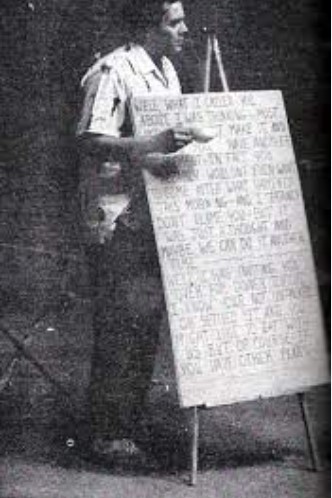
When “I Love Lucy” morphed into its hour-long format, cue cards were sometimes used, especially when the tensions of a failing marriage and running Desilu took Lucy and Desi’s time away from script memorization and busy guest stars did not have the time for extensive rehearsals. The above photo was taken during rehearsals for “The Star Next Door” (1957).
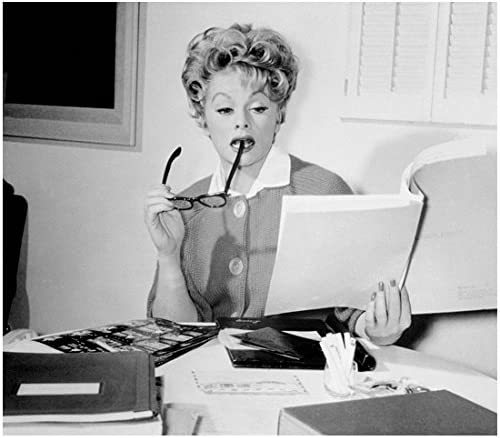
When Lucy launched “The Lucy Show” in 1962, she was also trying to run Desilu. Along with her adminsitrative duties, she still had to find time to learn a 30-minute script every week. She was also a newleywed and mother of two children, so time was precious.

Tony Mendez, who famously flipped cards for David Letterman and often appeared on camera as well, was interviewed by New York Magazine in 2001 and recalled how he got started in the business:

It seems that Lucille Ball was not the only one relying on cue cards. According to Mendez, Lucy merely needed a prompt, but Vivian needed the entire line!

In fact, the DVD extras for “The Lucy Show: Season One” include footage of Vivian using cue dards to do the show’s in-character commercials. They are positioned just behind Ralph Hart’s head!
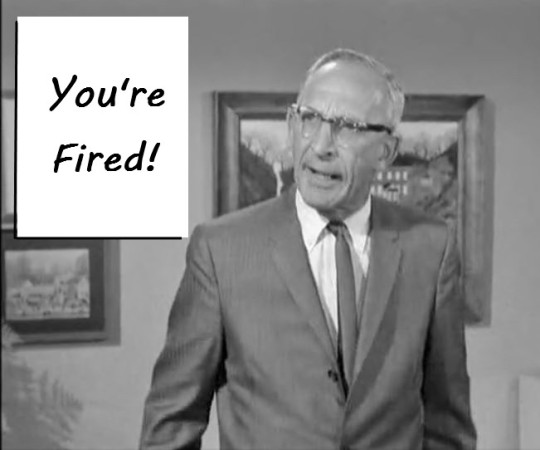
Lucy was was still adamant that her cast try and memorize their lines. When Charles Lane (banker Barndsdahl) stumbled over his dialogue, impatient Lucy used this as a reason to replace him. In reality, this may have been just the “for publication” story of what was actually Ball’s long-held desire to cast Gale Gordon. When the series began, Gordon was under contract to “Dennis the Menace” and couldn’t commit to Lucy. As soon as he became available, however, Lucy was not about to het him get away again - even if it meant dismissing Lane.
By “Here’s Lucy” - Ball’s third TV sitcom - she was using cue cards more often than not - espeically if the episode demanded a lot of rehearsal of music and dance.
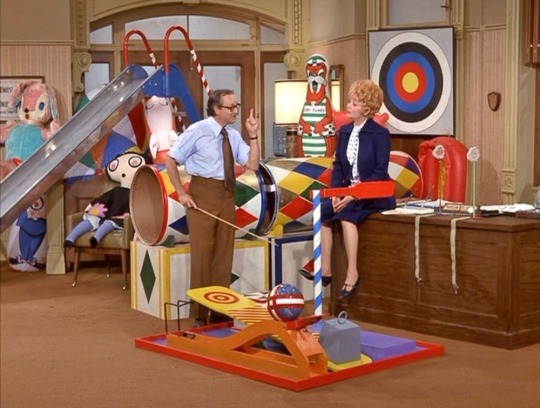
Tommy Tucker was the name of the “Here’s Lucy” cue card coordinator. Tucker and Lucy enjoyed playing word games together during lulls in shooting. As a tribute to him, the toy vendor played by Wally Cox in “Lucy Sublets the Office” (1972) was named Tommy Tucker. Tucker was interviewed for the short film “Lucy Meets The Burtons: A Comic Gem” which is included on the “Here’s Lucy: Season 3″ DVD.
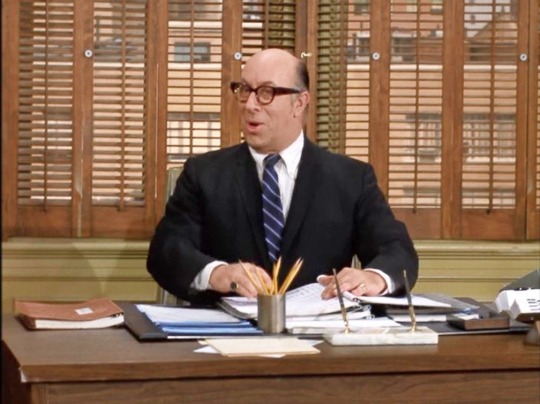
Coincidentally, one of the guest actors in this episode was Richard Deacon. His eyes can frequently be seen looking at the cue cards.

Another guest actor who’s eyes were usually seraching for the cue cards is Lyle Talbot, who played Harry’s lawyer in “Lucy Takes Over” (1970).

Not being an actor, Lawrence Welk’s eyes often distractingly glance over at the cue cards for his lines during his appearance on “Here’s Lucy” (1970). He smiles at his own jokes, and anticipates rather than reacts.

The webiste ‘Everything Lucy’ points to “The Bow-Wow Boutique” (1973) as when Lucille Ball started to rely almost exclusively on cue cards. Ball said that one of the hardest things to do was to erase the previous week's script from her mind to make way for a new one. After all, she was walking around the same set every week, having dialogue with the same people.

Filming a promotional spot with Bobe Hope, Ball squints at distant cue cards and quips,
“Well, let’s use the bigger ones. I can see the little ones, but why the hell not use the bigger ones?”
CHEAT SHEETS, SCRIPTS & CUES

Sometimes, a script - or a few pages of script - made it onto the set. A close-up of the Swiss cheese sandwich in “First Stop” (1955) shows a couple of pages of script on the table. A few lines have even been crossed out!

In “Lucy in the Music World” (1965) the verbose but funny album names were taped to the back of the record sleeves!
“He Wears a Hubcap for a Halo” (about a teenage girl whose boyfriend got run over by a police car)
“I've Got Tears in My Ears from Lying on My Back in My Bed While I'm Crying Over You”
“I Lost You to the Arms of Another” (about a girl whose boyfriend goes skin diving and gets tangled up with an octopus
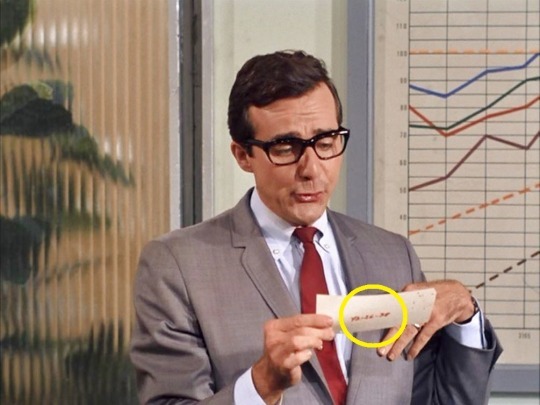
In “Lucy, the Matchmaker” (1968) Mr. Morton (Dick Patterson) reads Harry’s computer dating punch card. His match’s number is written on the card in red marker and the ink has bled through to the other side! Perhaps Patterson had trouble memorizing the number correctly?
PROTESTING CUE CARDS

Sometimes the materials that were used to create the cue cards were also used for other purposes. They were the perfect size for protest signs when “Lucy Goes on Strike” (1968).
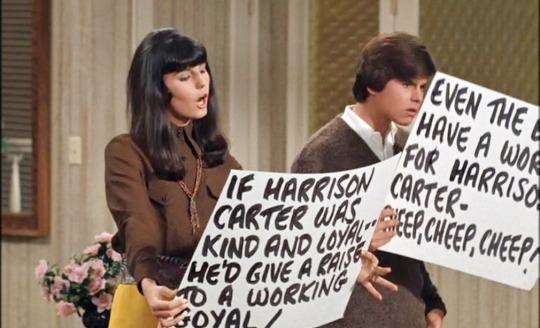
The distinctive all caps handwriting in bold black ink was a hallmark of cue card writers.

At the end of season five of “Here’s Lucy” in 1973, Ball had decided to end the series. She filmed an ending to the final episode where she hangs an “Out of Business” sign on the door of the Unique Employment Agency. But at the last moment, CBS convinced her to do a sixth season, so the ending moment was re-filmed with Lucy tacking a sign reading “Temporarily” above the “Out of Business” sign. The addional sign was obviously made from the same cardboard used for the cue cards - and by the same hand.

By the season six finale of “Here’s Lucy,” “Lucy Fights The System” in 1974, it was obvious that Ball was nearly completely dependent on the cue cards. Luckily, the storyline was basically carried by Lucie Arnaz, and Lucy’s scenes were mainly sitting at her desk.

During her final series, “Life With Lucy” (1986), it was well known that Lucille Ball read her lines from cue cards. She was 75 years old and in failing health, so it is an understandable accommodation.
#cue cards#teleprompter#I Love Lucy#Jess Oppenheimer#The Lucy Show#Here's Lucy#Lucille Ball#Gale Gordon#Lucie Arnaz#Desi Arnaz Jr.#Dick Patterson#Mel Torme#Mary Wickes#Lyle Talbot#Richard Deacon#Bob Hope#Wally Cox#Tommy Tucker#Charles Lane#Mary Emerson#Ed Wynn#Barney McNulty
11 notes
·
View notes
Text
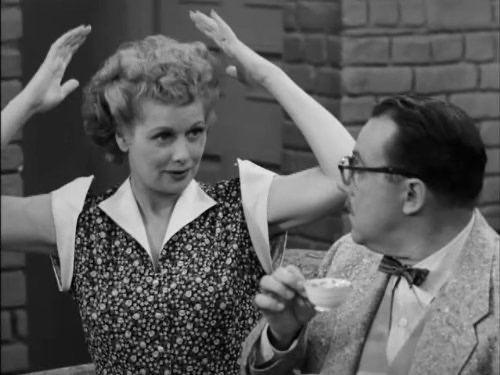
What do you mean, no stunts?? Our new episode, "Ricky Asks for a Raise," drops tonight at midnight!
8 notes
·
View notes
Photo

1974 television
4 notes
·
View notes
Text
Podcast Actor Gale Gordon Golden Age of Radio Tribute
0 notes
Text
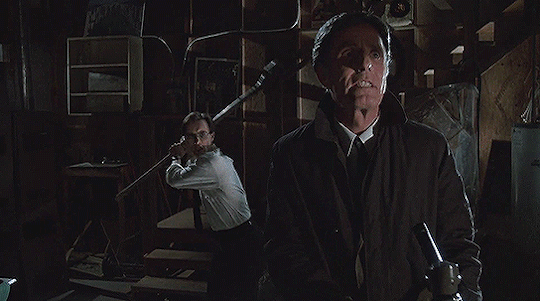


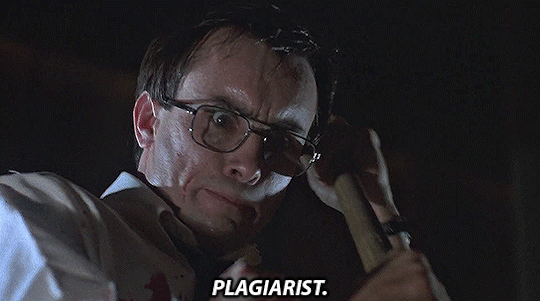

Re-Animator (1985) // Dir. Stuart Gordon
#Re-Animator#ReAnimator#Stuart Gordon#Jeffrey Combs#Herbert West#Carl Hill#Dr. Hill#Dr. Carl Hill#David Gale#B Movies#B Movie#Low Budget Movies#Horror#B Horror#B Movie Gifs#AVB#AVBGifs#AVRe-Animator#AVRe-AnimatorGifs#AVBHorror
2K notes
·
View notes
Text
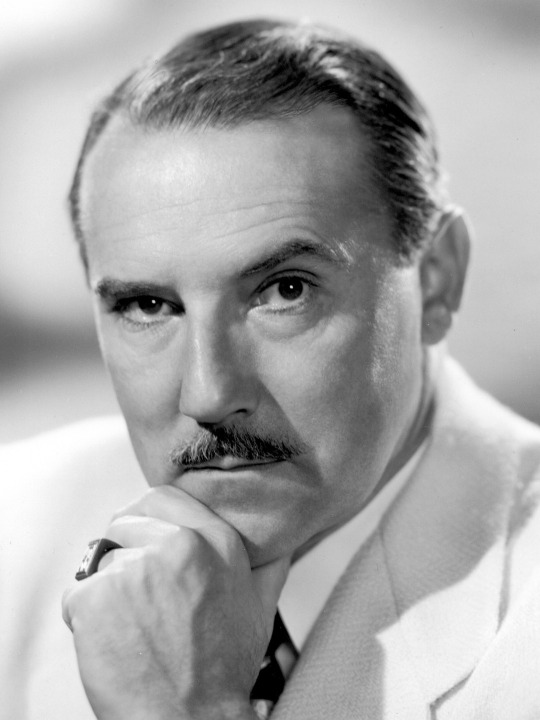
Remembering Gale Gordon on his birthday #botd
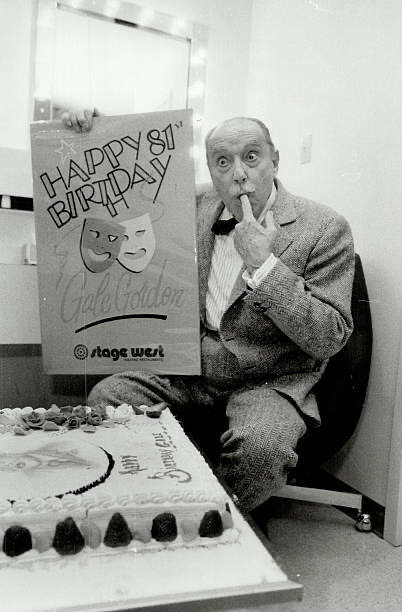
22 notes
·
View notes
Video
youtube
The Lucy Show | S05 E05 | Lucy and the Ring a Ding Ring | CC
Season 05, Episode 05 | 1966 | Closed Captioned. Lucy tries on an expensive ring Mr Mooney had made for his wife, it looks like the bank manager won't be able to give his spouse the anniversary present - it gets stuck on Lucy's finger.
#youtube#Lucille Ball#the lucy show#classic tv#classic television#videos#PAB network#classics#comedy#classic comedy#ring#gale Gordon#humor#tv#television#PABTV#PAB#PABdesk
1 note
·
View note
Text

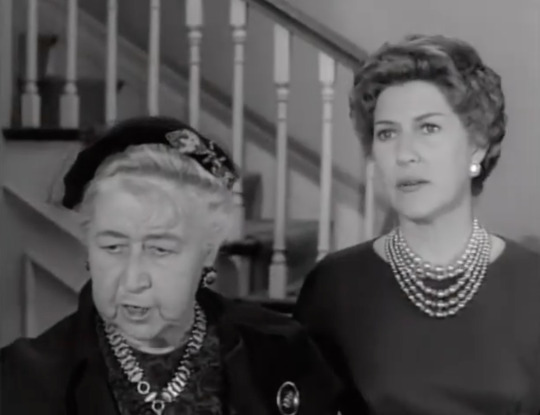


Verna Felton's total contempt for Gale Gordon
11 notes
·
View notes
Text
Lucy's Halloween Nightmare
Lucy’s Halloween Nightmare
In this cartoonish fantasy sequence from Here’s Lucy, Lucille Ball and sidekick Vivian Vance are trapped in a haunted castle by her boss Mr. Mooney (Gale Gordon) who is actually quite believable as a scary vampire. Along the way they are accosted by a malevolent Morris chair, a gorilla, a lab assistant who is a mummy for some reason (probably because that’s what costume was available), a werewolf…
youtube
View On WordPress
1 note
·
View note
Photo

TV Guide - August 4 - 10, 1962
Gale Gordon (1906 - 1995) Radio and television character actor best known for portraying Principal Osgood Conklin on “Our Miss Brooks”, banker Theodore Mooney on “The Lucy Show“ and John Wilson on “Dennis the Menace”. He also co-starred with Lucille Ball in the series “Here’s Lucy” and “The Lucy Show” as well as regularly guest starring in several sitcoms during the 1950′s.
Jay Waverly North (born August 3, 1951) Film and television actor. Beginning a career as a child actor at the age of six, he became a household name during the early 1960s for his role as the well-meaning but mischievous Dennis Mitchell on the CBS situation comedy Dennis the Menace, based on the comic strip created by Hank Ketcham.
As a teen, North starred in the NBC television series Maya. As an adult, he turned to voice acting work for animated television series, voicing the roles of Prince Turhan in the Arabian Knights segment of The Banana Splits Adventure Hour and a teenaged Bamm-Bamm Rubble on The Pebbles and Bamm-Bamm Show.
North’s first professional acting job was a live appearance on the gameshow Queen for a Day, hosted by Jack Bailey. He continued to work as a child model and actor in commercials, and landed small parts on a number of popular NBC variety shows of the 1950s, such as The George Gobel Show, The Eddie Fisher Show, and The Milton Berle Show, before auditioning for the role that made him a star.
46 notes
·
View notes
Text
MOVIES on TV!
Part 3 ~ The Movies of “Here’s Lucy”

In “Here’s Lucy,” Lucille Ball had a new character, a new family, and a new show - but one thing remained constant, her love of movies! Here are some of the movies (real and imagined) of “Here’s Lucy.”
~FACTUAL FILMS~

“Lucy and Carol Burnett” aka “The Unemployment Follies” (1971)
Carol and Lucy stage a tribute to Hollywood using unemployed actors. The films mentioned and/or feted include:
TO HAVE AND HAVE NOT (1944)
BLUE ANGEL (1930)
CASABLANCA (1942)
42ND STREET (1933)
THE WIZARD OF OZ (1939)
SINGIN’ IN THE RAIN (1952)
ROSE MARIE (1954)

The set is decorated with posters from:
HOLLYWOOD OR BUST (1956)
SAMPSON AND DELILAH (1949)
THE GREATEST SHOW ON EARTH (1952)
SHORT CUT TO HELL (1957)
GONE WITH THE WIND (1939)
UNDER TWO FLAGS (1936)

“Ginger Rogers Comes To Tea” (1971)
Ginger Rogers leaves her purse in a movie theatre where she's gone incognito to see one of her films for the first time. Lucy and Harry discover the purse and hope to get to meet the star in person by inviting her to tea. Instead of working late, Lucy tells Harry that she wants to go to a Ginger Rogers Film Festival. They are showing Tender Comrade (1943) and Flying Down To Rio (1933), two films made at RKO, which eventually became Desilu.

Rogers tells Lucy she has done 73 movies. Rattling off some of Rogers' hits, Lucy adds a sugar cube to Ginger's tea for each title: Top Hat, Roberta, Flying Down To Rio, Follow the Fleet, Shall We Dance, and The Barkleys of Broadway. When Lucy realizes she's put six lumps of sugar in Ginger's tea, Rogers says she only wanted Top Hat and Roberta (two lumps).

Trying to impugn the taste in films of the mystery woman (a disguised Ginger Rogers), Lucy tells her to try back next week and they might be showing Beach Blanket Bingo (1965). This was the fourth of the light comic films set on the California beach starring Frankie Avalon and Annette Funicello.

After dancing the Charleston with Lucy and Kim, Lucy asks Rogers to do a scene from Kitty Foyle, Ginger’s Oscar-winning role. Rogers graciously declines, asking Lucy to become a Katherine Hepburn fan instead!

“Guess Who Owes Lucy $23.50?” (1968)
Lucy loans Van Johnson money to fix his car – but the man turns out to be an impostor. This episode is written for Van Johnson to work in a not-so-subtle plug for their latest film Yours, Mine and Ours (1968) starring Henry Fonda.
VAN IMPOSTER:“I loved working with that kooky redhead.”
LUCY: “Personally, I thought she was much too young for Henry Fonda.”
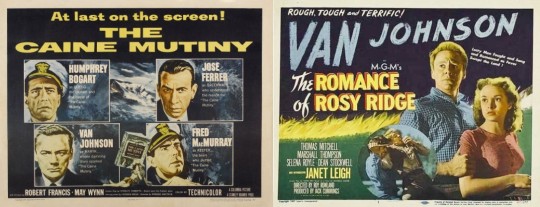
Lucy says she remembers Johnson from his appearance in The Romance of Rosy Ridge (1947). She later tells him she saw the film 17 times! When Lucy is escorted out by the studio guards at Van’s direction, Lucy says that now she’s glad he got court martialed in The Caine Mutiny (1954).

“Lucy and Aladdin’s Lamp” (1971)
When Lucy holds a garage sale, she discovers an old lamp that she believes may be make wishes come true. Lucy pulls out a fur-lined jacket she says was worn by Joan Crawford in Mildred Pierce. The 1945 film won Crawford an Academy Award. Craig says that judging by the shoulder pads she could have worn it in The Spirit of Notre Dame, a 1931 football-themed movie starring Lew Ayres.

“Lucy and Flip Go Legit” (1971)
Lucy takes a temp assignment with Flip Wilson in order to answer his fan mail. When she is caught sneaking into Wilson’s office to ask him a favor, she gets caught and fired. The favor is to appear in a community theatre production of Gone With The Wind (1939) – as Prissy. Lucy plays Scarlett O’Hara, Harry plays Rhett Butler, and Kim takes the role of Melanie Wilkes.

“Won’t You Calm Down Dan Dailey?” (1971)
Lucy gets a job working for Dan Dailey. When he starts to dictate a letter to Paul Newman at Universal Studios, Lucy says she saw Newman on the late show in Winning, a 1969 film about a race car driver.

“Lucy and Rudy Vallée” (1970)
Famous crooner Rudy Vallée is waiting tables to pass the time until his music comes back into style. Lucy convinces Kim to help update his look and sound while Harry gets him a booking at the local teen hangout. When a life-size portrait of Vallée in a raccoon coat is revealed, Vallée says he wore the coat in his first picture, Varsity Hero, a silent picture where critics raved about his singing!

In reality, Vallée’s first film (aside from two shorts playing himself) was The Vagabond Lover in 1929.

“Lucy and Chuck Connors Have a Surprise Slumber Party” (1974)
Harry rents out Lucy’s home for a movie shoot. After causing several re-takes, Lucy is banished from her own home. When she returns early, she doesn’t know that Chuck Connors is staying overnight – in her bed!
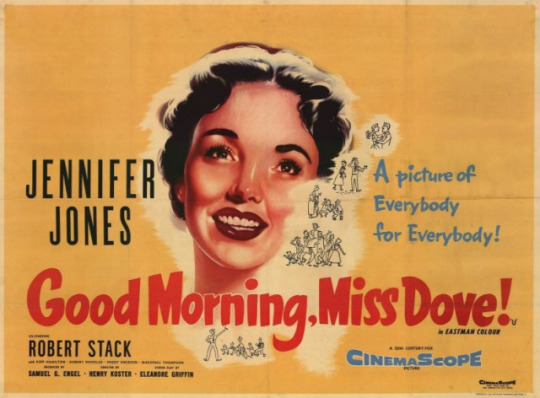
Jerry, the film’s director, tells Chuck that his film Good Morning, Miss Dove starring Jennifer Jones is on television that night. Connors says the film was one of the few times he got to nuzzle something besides a horse. Released in 1955 by 20th Century Fox, the film co-stars Mary Wickes, a frequent guest star on all of Lucille Ball’s sitcoms. It also features Jerry Paris, who directed two episodes of “Here’s Lucy” before being fired, and Robert Stack of Desilu’s “The Untouchables.” Other “Lucy” alumni in the film include Herb Vigran, Hal Taggart, and Arthur Tovey – all appearing uncredited.

“Lucy Meets the Burtons” (1972)
The hotel manager tells Burton that the back door is mobbed by the Elizabeth Taylor Fan Club – Glendale Chapter. Membership to the club requires seeing National Velvet 10 times! National Velvet (1945) was made when Taylor was just twelve years old.
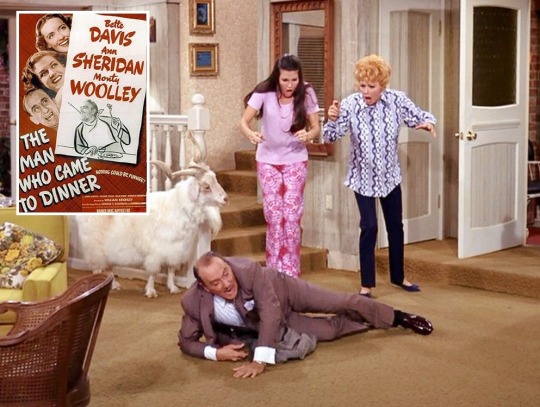
“Lucy’s House Guest, Harry” (1971)
As Harry is finally is finally about to leave, Lucy has a horrible thought: what if he is like Sheridan Whiteside in The Man Who Came to Dinner and falls on his way out and must stay with them even longer? The play, by George S. Kaufman and Moss Hart, opened on Broadway in 1939. It starred Lucille Ball's good friend (and “Here's Lucy” performer) Mary Wickes as Nurse Preen. Wickes was one of several actors who recreated their roles in the 1942 film adaptation.
~FICTIONAL FILMS~

“Lucy, the American Mother” (1970)
Craig makes a film about Lucy, a typical American mother. During the episode, Kim does impressions of Katharine Hepburn in Stage Door (1937), a film that also featured Lucille Ball, Maurice Chevalier in Innocents of Paris (1929), and Bette Davis in The Great Lie (1941).
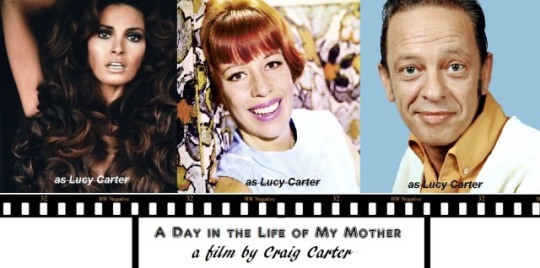
The title of Craig's movie will be “A Day in the Life of My Mother.” When Lucy can't seem to act natural in front of Craig's camera, she suggests he get someone else to play his mother; someone like Raquel Welch, Carol Burnett, or Don Knotts.
~FILM INSPIRATIONS~
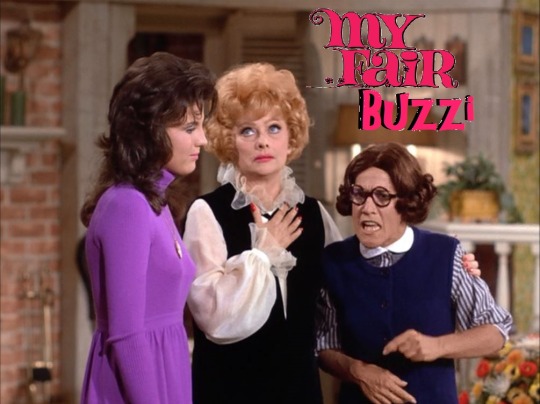
“My Fair Buzzi” (1972)
Kim’s shy and awkward friend Annie (Ruth Buzzi) comes out of her shell in order to audition for a 1920s revue, only to find the director was looking for someone shy and awkward in the first place! The episode title and story of transformation were inspired by the 1956 Broadway musical and 1964 film My Fair Lady, which, in turn, was inspired by George Bernard Shaw’s Pygmalion. Both are mentioned in the dialogue of the episode.

“Dirty Gertie” (1972)
Lucy gets a surprise fruit basket and heads downtown to share her good fortune with her hairdresser. On the street she is mistaken for Dirty Gertie, an apple peddler who just happens to be the good luck charm of a local gangster. This episode was inspired by the 1961 Frank Capra film Pocketful of Miracles in which Bette Davis played Apple Annie, a poor woman reduced to selling apples on the street. The film featured previous “Lucy” co-stars Edward Everett Horton, Jay Novello, Ann-Margret (film debut), Sheldon Leonard, Jerome Cowan, Fritz Feld, Ellen Corby, Benny Rubin, Hayden Rorke, Bess Flowers, Vito Scotti, Bert Stevens, Arthur Tovey, and Romo Vincent.

“Lucy Runs the Rapids” (1969)
The Carters take a road trip in a camper. The episode opens with the soundtrack playing “Breezin’ Along”, the theme song from The Long, Long Trailer (1954), a film starring Lucy and Desi as a couple honeymooning in a trailer.
~FILM FAKES~

“Lucy Cuts Vincent’s Price” (1970)
Price is filming a new horror film titled Who’s Afraid of Virginia’s Wolfman? He says it has the best title since he starred in The Giant Chihuahua That Ate Chicago.
~FILM REFERENCES~
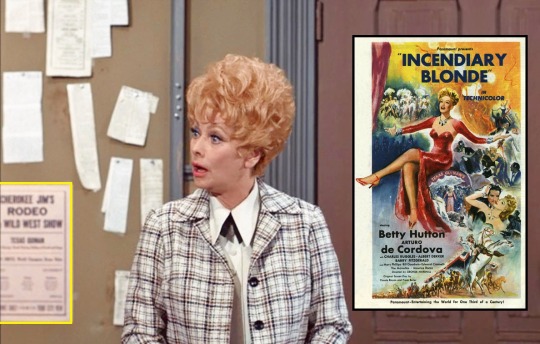
“Lucy, the Cement Worker” (1969)
In Pierre’s the knife thrower’s studio, there is a handbill on the bulletin board for ‘Cherokee Jim’s Rodeo and Wild West Show’, which is a direct reference to the 1945 film Incendiary Blonde starring Betty Hutton as Texas Guinan. The film was directed by George Marshall for Paramount, the same director and studio producing this episode of “Here’s Lucy” 25 years later!

“Lucy in the Jungle” (1971)
When Harry sees baby chimps Fido and Rover, he reminds Lucy and Kim that King Kong started out as a baby, too! King Kong, Hollywood’s tale of a giant ape, was first filmed in 1933, then re-made in 1976 and 2005. Fay Wray, one of the stars of the original film, also made The Bowery that same year, one of Lucille Ball’s first films.

“Lucy and the Ex-Con” (1969)
Lucy and Rocky (Wally Cox) go undercover as little old ladies to catch a crook. When Lucy and Rocky pass out (as planned) one of the crooks says to the bartender “Give me a hand with arsenic and old face.” Arsenic and Old Lace is a 1944 film where two elderly spinsters serve lethal glasses of elderberry wine to unsuspecting older gentlemen and bury them in their basement!

“Lucy and The Generation Gap” (1969)
Lucy and Uncle Harry help Kim and Craig stage the school musical. In the first act of the musical set in ancient Rome, Lucille Ball is reading a magazine called 'Roman Scandals’. Roman Scandals is also the title of Lucille Ball’s uncredited film debut in 1933.
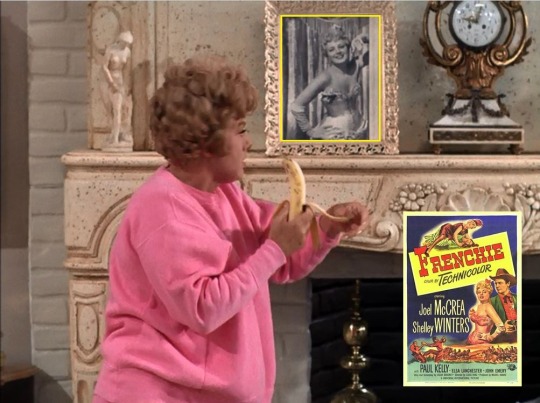
“Lucy and Shelley Winters” (1968)
Hired to watch over dieting movie star Shelley Summers. On the mantle of Summers' apartment is a photo of a svelte Shelley Winters from the 1950 film Frenchie. She glances guiltily at the photo when she is about to overeat.
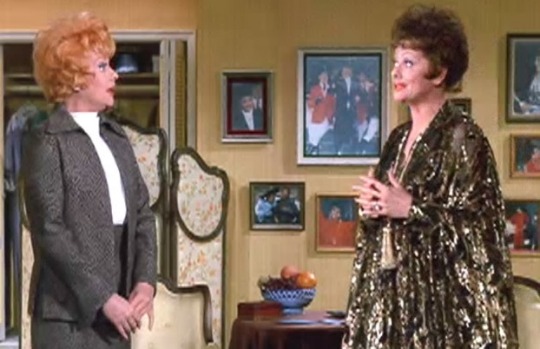
“Lucy Carter Meets Lucille Ball” (1974)
Although Lucille Ball's dressing room wall is lined with photographs of Mame and the soundtrack plays the title tune by Jerry Herman, the name of the movie is never specifically mentioned. The film was given its world premiere on March 7, 1974 three days after this episode first aired, and released nationally three weeks later. As Mame, Lucy failed to ‘charm the husk off of the corn.’
#Lucille Ball#Here's Lucy#Gale Gordon#TV#Movies#Shelley Winters#Vincent Price#Wally Cox#Bette Davis#Ruth Buzzi#Ginger Rogers#Van Johnson#Lucie Arnaz#Desi Arnaz Jr.#Carol Burnett#Don Knotts#Racquel Welch#Richard Burton#Elizabeth Taylor#Chuck Connors#Dan Dailey#Flip Wilson#Rudy Vallee
9 notes
·
View notes
Photo

just thought y’all should know that the tagline for the re-animator article in fangoria is “a mOiSt zombie movie”
#important info#do with this what you will#re-animator#herbert west#jeffrey combs#dan cain#bruce abbott#reanimator#david gale#fangoria#fangoria magazine#barbara crampton#re animator#stuart gordon
4K notes
·
View notes